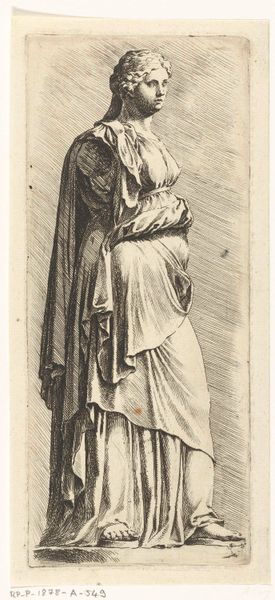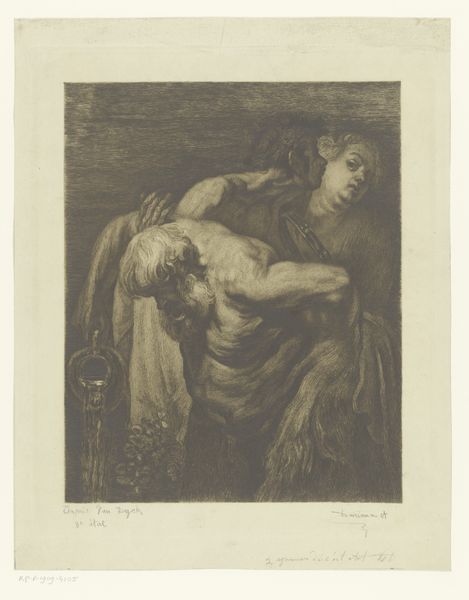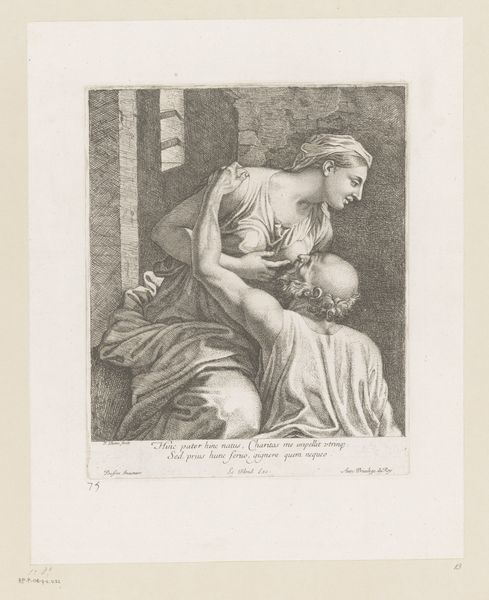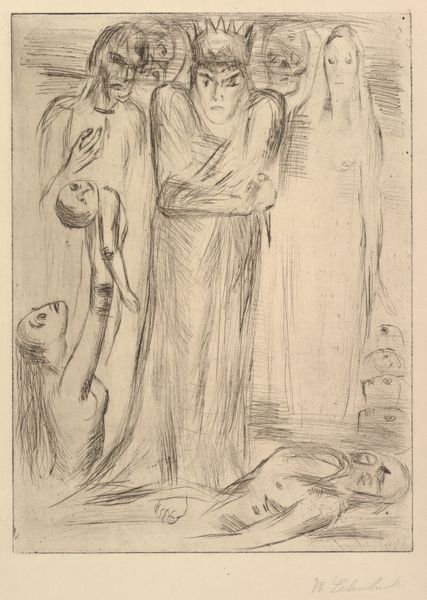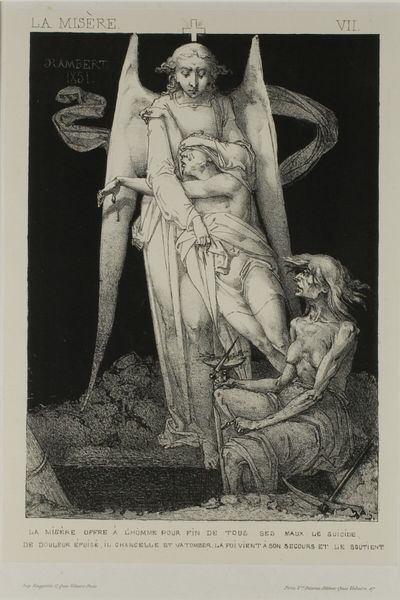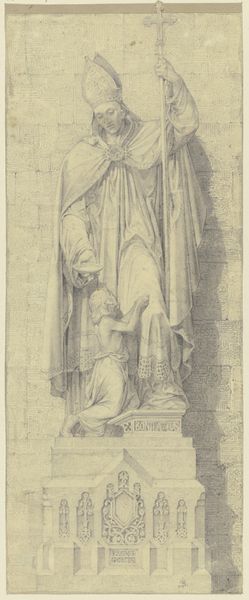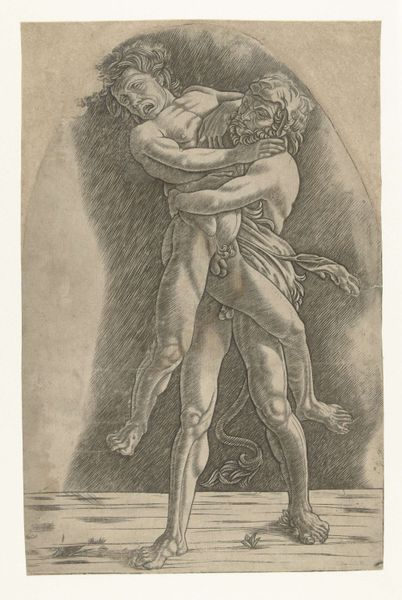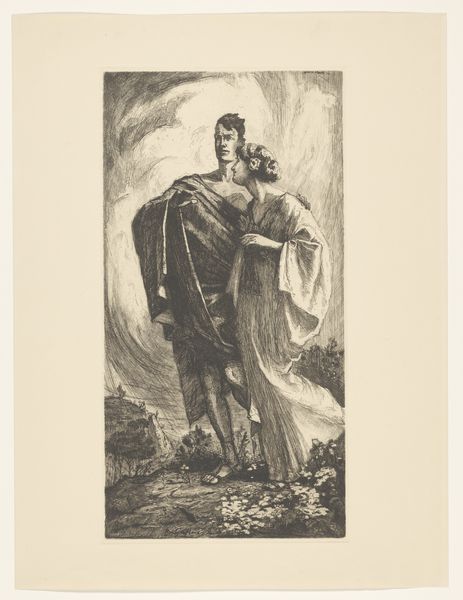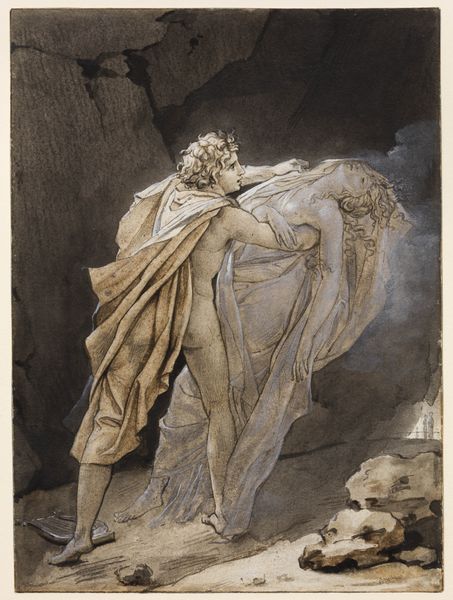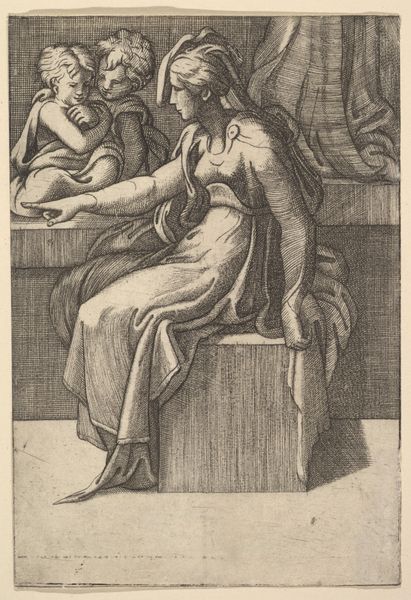
Dimensions: height 469 mm, width 348 mm
Copyright: Rijks Museum: Open Domain
Rogelio de Egusquiza made this print of Tristan and Isolde locked in an embrace sometime around 1896. This work is an instance of Wagnerism, the fin-de-siècle cultural phenomenon through which intellectuals, artists and critics across Europe were captivated by the operas of Richard Wagner, especially the tragic love story of Tristan and Isolde. The image creates meaning through the visual codes of Symbolism, a movement that rejected realism in favour of emotion and spirituality. The lovers transcend earthly concerns, becoming emblems of love and death. Egusquiza was Spanish, but he lived in Paris, a city in which the institutions of art were flourishing in the late 19th century. Here, the official Salons, state-funded academies and independent galleries formed a complex ecosystem of artistic production. His work presents a progressive critique of the rigid social conventions of the time, reflecting a desire to explore the depths of human emotion. To understand this work better, we can consult letters, exhibition reviews, and biographies of the artist. We can also research the history of Wagnerism and the Symbolist movement. Art is contingent on its social and institutional context.
Comments
No comments
Be the first to comment and join the conversation on the ultimate creative platform.
